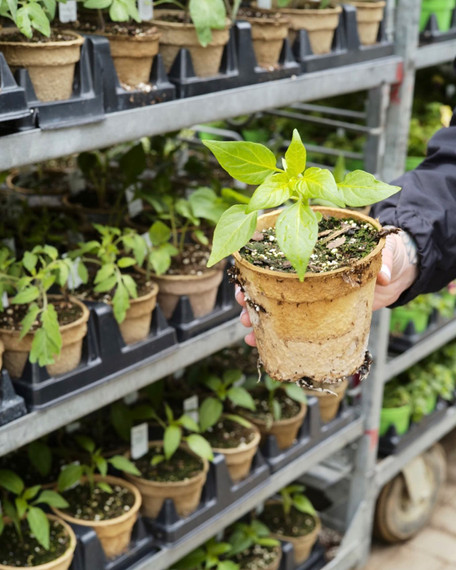Grow Your Own Food
Posted by Megan Nichols on May 9th 2020
Growing our own food is always fun and rewarding, and there has been a recent surge in interest given the additional time and opportunity to take up new hobbies.
Ready to start a veggie garden, or need to brush up on the basics? It’s fun, pretty easy, and very rewarding. Here’s what you need to know to get growing.
Edible Gardening Basics
Sun
Most fruits and veggies want full sun, so 8 hours or more is best. If you only have 3-4 hours it’s possible to grow lettuce, kale, spinach, and other leafy greens. With 5-6 hours of sun try radish, carrots, parsnip, and swiss chard.
Water
Consistent watering is important to plants. Water deeply 1-2 inches per week, and water in the morning to allow the plants time to dry off. Lawn sprinklers do not water deeply enough, so it’s best to use a hose or drip irrigation.
Soil
Veggies need soil that is fertile with good drainage The soil also need good water holding capacity so the plants have time to take up what they need. Soil structure and fertility can be improved with amendments.
Compost cannot replace soil but is a fabulous soil amendment. Compost allows sandy soils to retain water and clay soils to drain water. Try Purple Cow Activated Compost, which is full of microbes that convert nutrients to a form easily taken up by plants. Or, make your own compost with kitchen scraps! Just be sure not to use animal products when composting at home.
For container gardening, use a high-quality potting mix such as Tonkaterra.
Nutrients
Plants need nutrients to grow. There are several great fertilizers, some specific to the type of veggie or fruit its being applied to.
Location, Location
Where and how will you grow your edibles? There are quite a few options, and you can choose one or mix and match. Containers, raised beds, and it the ground are all possibilities. Get creative and plant herbs and lettuce in hanging baskets and window boxes, too.
Container edibles need a decent amount of soil to really grow their best and biggest:
Peppers, chard and dwarf tomatoes need 1-2 gallons per plant
Full-sized tomato plants, cucumbers need 4-5 gallons per plant
Lettuce, radish, onions, and beets like 6"-10" diameter pots
Most herbs grow fine in 4"-6" diameter pots
A container holds:
8” pot = 1.5 gallons soil
10” pot = 2.5 gallons soil
12”pot = 3.5 gallons soil
14” pot = 4.5 gallons soil
16” pot = 5.5 gallons soil
Raised Beds
These are typically 4x4 or 4x8. Pros include better control over quality of soil and fertilizer. Be sure not to use green treated wood as it contains chemicals that shouldn’t be allowed to leech into food.
In Ground
The traditional method of gardening is still popular and practical. Pros include the ability to expand or change the shape at any time, as well as the option to plant edibles next to perennials to create an edible landscape.
Extra, Extra…
Plant cool weather plants behind tall plants – lettuce in between corn or tomatoes
Plant tall crops on North side
Plant herbs close to the kitchen door for easy access
When buying veggie starts, be sure to keep your heat loving plants warm. Last frost date is typically around May 15th for our area, but has been as late as May 20. Heat loving plants include tomatoes, peppers, and eggplants.
Whatever you plant, home-grown veggies can’t be beat!

